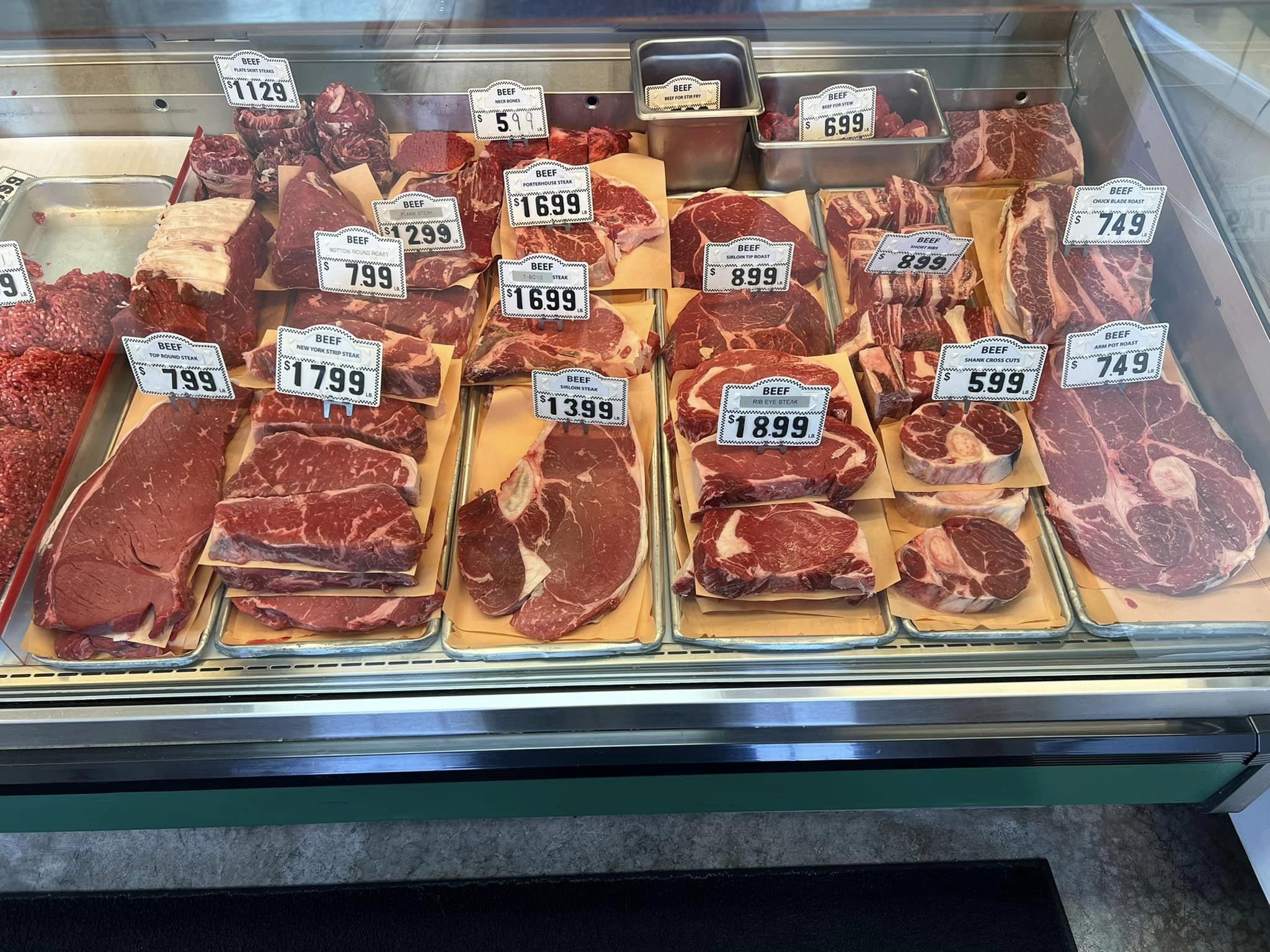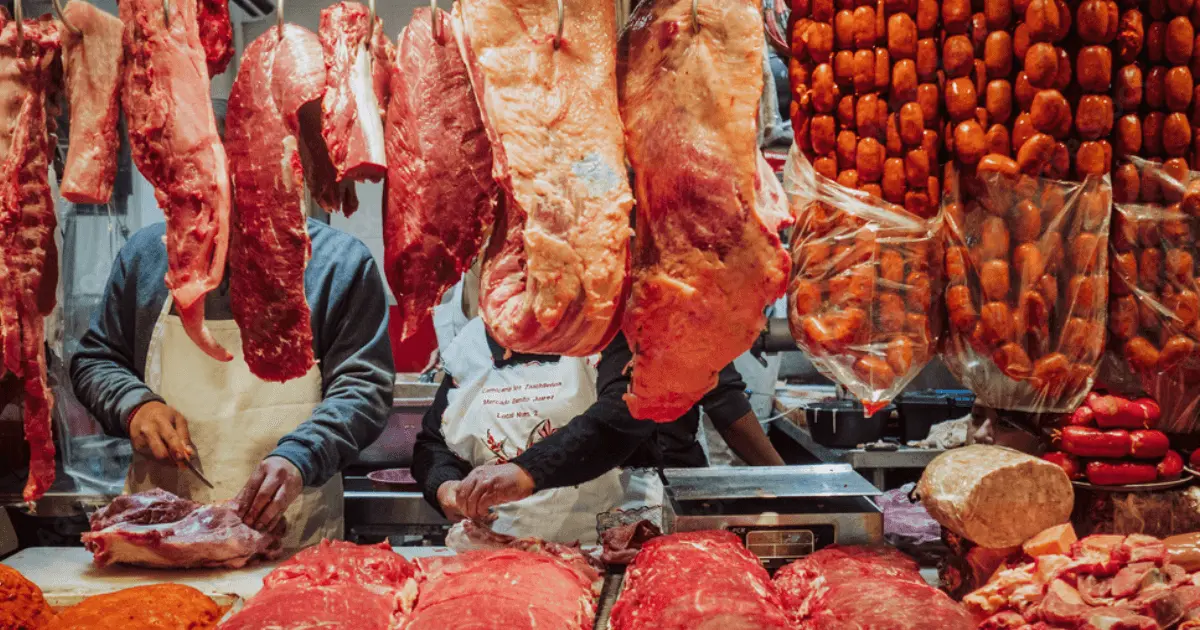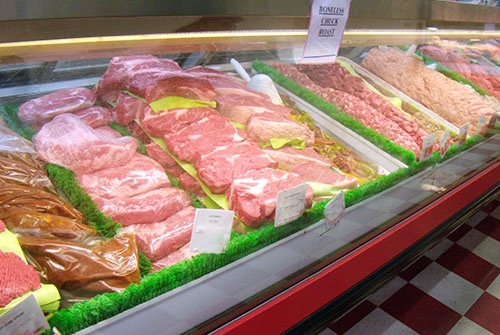Discover the Regional Flavor at Bagley Farms Meat Market Edwardsville IL: Fresh and Delicious
Discover the Regional Flavor at Bagley Farms Meat Market Edwardsville IL: Fresh and Delicious
Blog Article
Reveal the Art of the Butcher's Cut in a Modern Meat Market
In the ever-evolving landscape of modern meat markets, the butcher's cut has actually transcended its conventional roots, merging old-time craftsmanship with contemporary practices. bagley farms meat market edwardsville il. Today's butchers are not merely cpus of meat; they are well-informed craftsmens that highlight sustainability and moral sourcing. Their expertise in picking and preparing cuts customized to certain cooking requirements provides an unrivaled dining experience. What genuinely establishes the modern butcher apart is their ability to forge a deeper link between customers and the beginnings of their meat. How do these masters balance custom with development, and what ramifications does this have for the future of meat usage?
Development of Butchery Methods

The mid-20th century saw butchery strategies additionally fine-tuned by scientific understandings into muscle biology and meat aging, boosting both inflammation and preference. Innovations like vacuum cleaner product packaging and refrigeration expanded item shelf-life, allowing butchers to diversify offerings and improve quality assurance. This period likewise marked the rise of specific equipment, such as band saws and meat slicers, which boosted precision and efficiency in meat processing.
Computerized systems now assist in monitoring pet provenance and maximizing cuts to satisfy particular client preferences. Furthermore, a revival in artisanal butchery has actually emerged, mixing standard skills with contemporary expertise to provide to consumers looking for ethical and lasting meat alternatives.

Comprehending Meat Cuts

Understanding the intricacies of meat cuts is important for both butchers and customers looking for top quality and value. For butchers, accurate cuts show ability and respect for the craft, ensuring marginal waste and optimum yield.
The primary categories of meat cuts consist of primitive, sub-primal, and retail cuts. Butchers then damage these down further right into sub-primal cuts, before finally producing retail cuts available to consumers, like ribeye or tenderloin.
Comprehending muscular tissue composition is vital; muscles utilized more frequently by the animal have a tendency to be tougher and are best fit for slow-moving cooking approaches, while less-used muscle mass, like those discovered in the loin, are extra tender and ideal for grilling or roasting. Knowledge with these distinctions equips consumers to make enlightened options, enhancing their culinary endeavors.
Selecting High Quality Meat
Selecting the appropriate meat involves greater than simply picking an aesthetically enticing item from the display. The art of picking high quality meat calls for a discerning eye and understanding of certain characteristics that signify quality and excellence. First of all, take note of the color; beef needs to have a bright, cherry-red color, while lamb must show a soft pink tone, and pork a pale pink. This suggests the meat is fresh and hasn't been subjected to oxygen for too long.
Secondly, think about the marbling, which refers to the white flecks of fat within the muscular tissue. Correct marbling is an essential sign of tenderness and flavor, as it thaws throughout cooking, boosting the meat's juiciness. Bear in mind, greater marbling often associates with premium quality cuts, such as USDA Prime.
Structure is another important factor; meat should really feel solid to the touch, not slimy or overly soft. Furthermore, be conscious of the aroma. Fresh meat must have a tidy, neutral smell, devoid of any sour or repulsive smells.
Coupling Cuts With Cooking Techniques
Effectively combining cuts of meat with the appropriate cooking techniques is necessary for attaining optimum taste and appearance. Various cuts vary in tenderness, marbling, and connective tissue material, each requiring specific methods to unlock their capacity. Tender cuts like filet mignon and ribeye, with their integral marbling, advantage from high-heat, quick-cooking approaches such as barbecuing or pan-searing. These methods improve the meat's all-natural tastes and ensure a juicy coating.
Conversely, harder cuts like brisket and chuck roast are abundant in collagen, which damages down into gelatin when prepared gradually. These cuts are excellent for braising or slow roasting, enabling the meat to tenderize with time and develop deep, complicated flavors. Cuts such as brief ribs and pork shoulder make out well with slow-cooking methods, where prolonged cooking Go Here times transform their robust appearances right into succulent recipes.
Lamb shanks and oxtail, which need extended food preparation to tenderize, are best prospects for stewing or slow simmering. These approaches coax out abundant, passionate tastes while maintaining wetness. By understanding the unique attributes of each cut, chefs and home cooks alike can boost their cooking creations, making certain each recipe is both pleasing and unforgettable.
The Butcher's Role Today
Browsing the progressing landscape of the contemporary meat market, the butcher's function today extends past plain prep work of cuts. Contemporary butchers are culinary artisans, educators, and supporters for sustainable techniques. They link the void in between the ranch and the fork by making certain ethical sourcing, understanding pet husbandry, and prioritizing openness in the supply chain. This shift reflects the growing consumer demand for high quality over amount, where provenance and animal well-being are paramount.
Along with crafting specific cuts, butchers now involve straight with customers, using cooking recommendations and tailoring selections to match individual requirements and choices. Their experience in meat aging, marbling, and taste accounts encourages consumers to make informed decisions, boosting their culinary experiences. This individualized solution exhibits the butcher's advancing duty as a relied on expert in the cooking area.
Additionally, butchers are crucial in lessening waste, using whole pets to produce varied products such as sausages and supplies browse around this site - bagley farms meat market edwardsville il. This comprehensive method not just respects the animal yet likewise straightens with contemporary sustainability objectives. In this method, the modern butcher embodies both practice and innovation, adjusting to an ever-changing market while preserving the creativity and honesty of their craft

Final Thought
The modern butcher's craft elaborately weaves traditional techniques explanation with modern advancements, highlighting lasting practices and moral sourcing. Mastery in recognizing varied meat cuts and quality indications encourages butchers to supply educated suggestions, lining up certain cuts with optimal food preparation approaches. This experience not just raises cooking experiences yet additionally reinforces the link between customers and the beginnings of their food. By recognizing historical practices while welcoming modern needs, the butcher's function remains important in today's advanced meat market.
Report this page